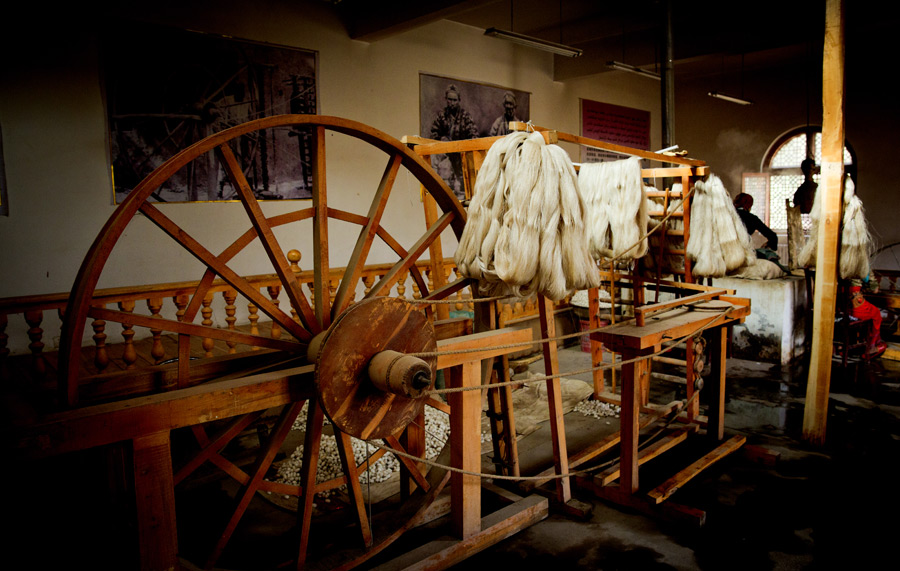
A local workshop demonstrates how the Atlas silk is made in the traditional way in Hotan prefecture, Xinjiang Uygur autonomous region. [Photo provided to chinadaily.com.cn]
As a traditional handicraft of the Uygur people in Xinjiang, the making of Atlas silk has a long history of more than 1,000 years. It was listed as the national intangible cultural heritage in 2008 and was called "the last silk making handicraft in the 21st century" and "a living fossil along the Silk Road".
Atlas is a traditional type of Xinjiang silk that means "graceful" in Uyghur language. Known for its softness, lightness, and bright colored patterns, it is made through a complicated process and is extremely popular among Uygur women in Xinjiang.

Drawing silk: The first step is drawing silk. The cocoons have to be sorted out first and the dirty and abnormal-shaped cocoons have to be boiled in water for about 15 minutes until the cocoons change to green color and are soaked with water. Then a stick is used to stir the cocoons and twist the fiber threads of the raw silk into strands. Normally, 25-30 threads make one strand. [Photo provided to chinadaily.com.cn]
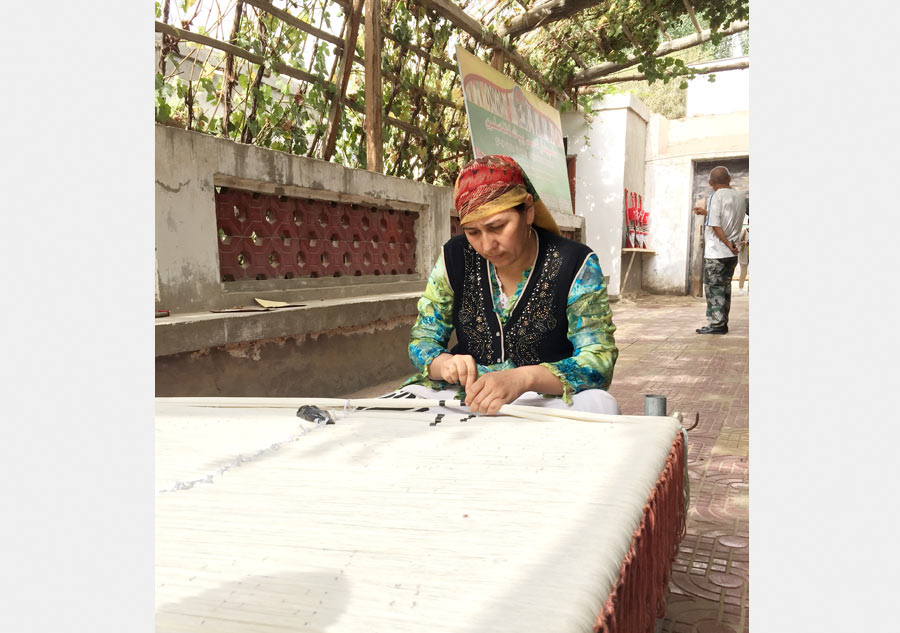
Coloring the silk: To color the silk threads, tie-dyed method is used here. It means plastic bags are used to bundle the threads up before coloring each part. [Photo by Bi Nan/chinadaily.com.cn]
Based on the design requirement, different patterns are made by staining lightly or deeply. Different colors are made by bundling up different parts each time and dipping into different colored dyestuffs. The traditional Atlas silk has four basic shades: black, red, yellow and multi-color.
Minerals like alum, indigo and natural plant extracts like walnut skin, jujube skin, and tamarisk are used to make dyestuffs.
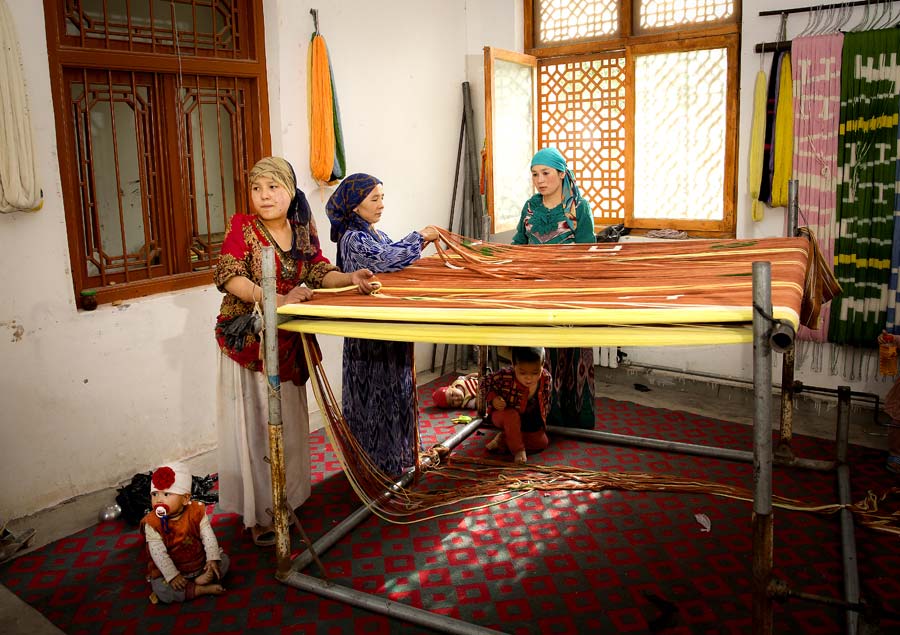
Tying the silk: The silk is secured to a wooden frame and then tied up according to traditional patterns. [Photo provided to chinadaily.com.cn]
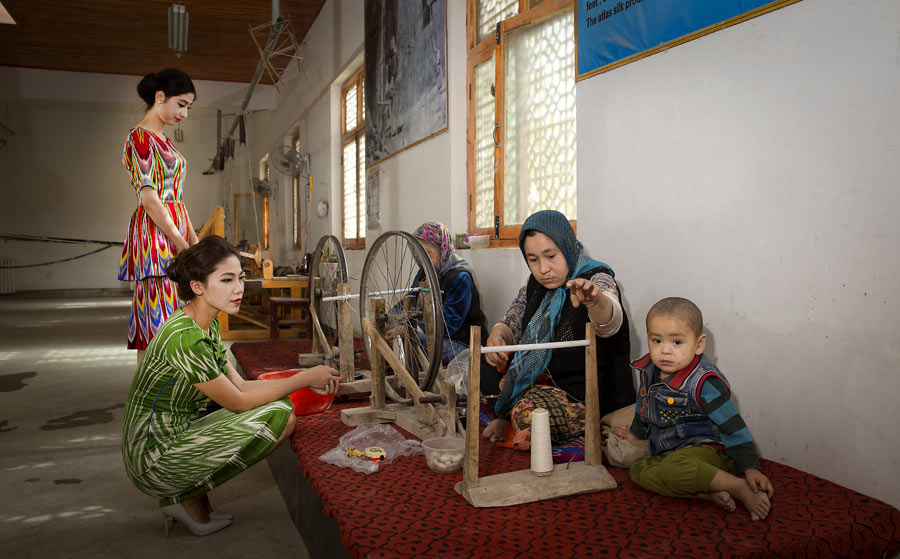
Combing: When the threads are completely colored they can be used together to make patterns. [Photo provided to chinadaily.com.cn]
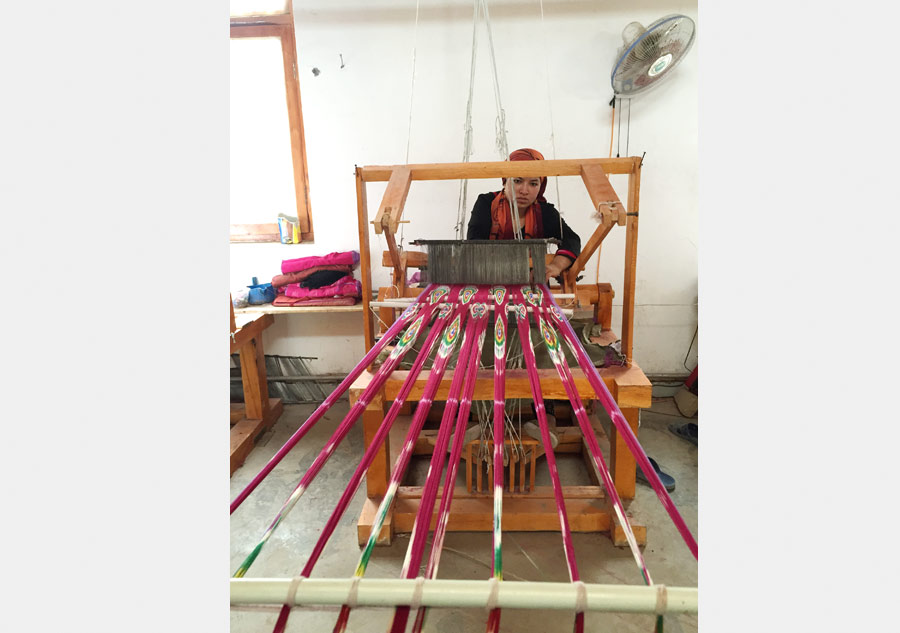
Weaving: In accordance with the designed patterns, workers start weaving on top of the basic colors. Normally, a handmade Atlas silk is 6.45 meters long and 0.45 meters wide. [Photo by Bi Nan/chinadaily.com.cn]
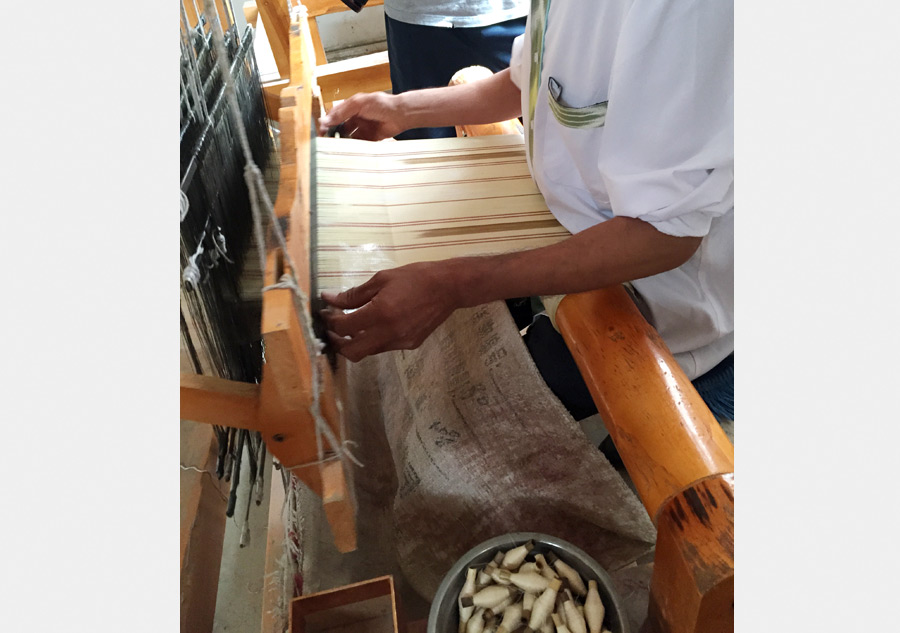
The traditional weaving method requires workers using their hands and feet at the same time and one person can produce 3-4 meters long silk per day. [Photo by Bi Nan/chinadaily.com.cn]
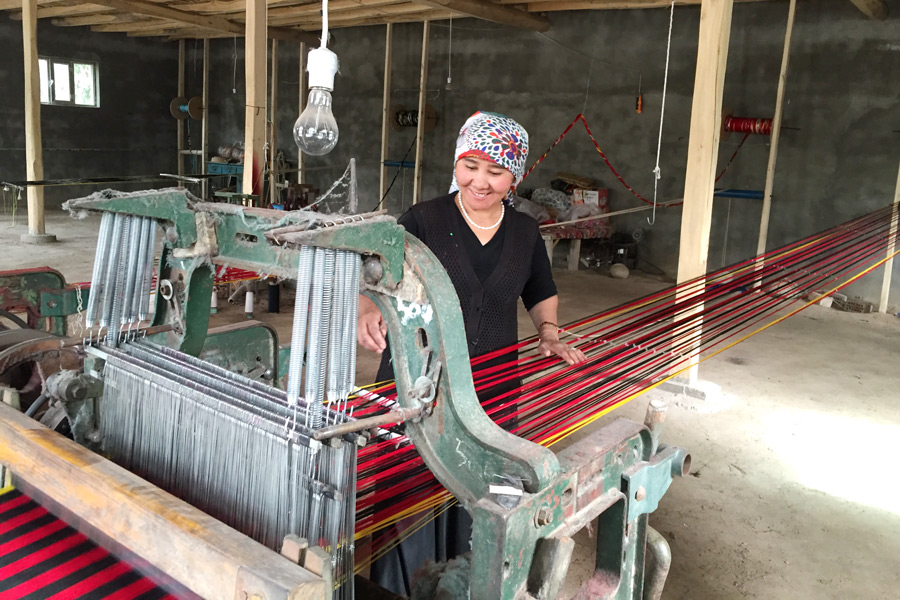
Some family-owned workshops also use machines to weave the silk. [Photo by Bi Nan/chinadaily.com.cn]
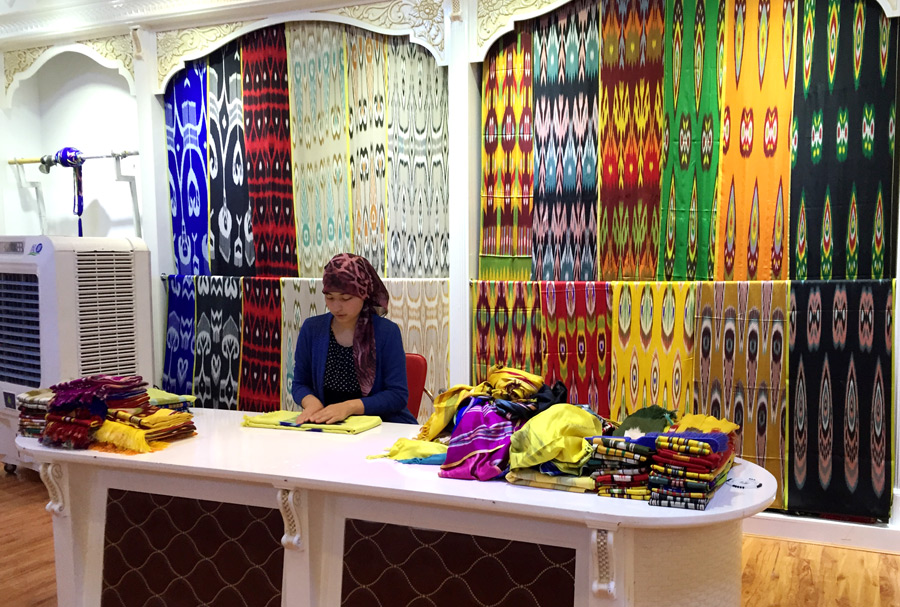
A local shop sells handmade Atlas silk in Xinjiang. [Photo by Bi Nan/chinadaily.com.cn]

